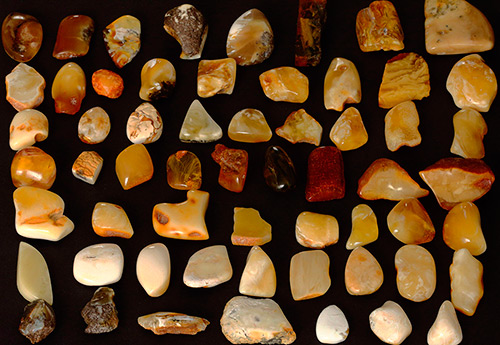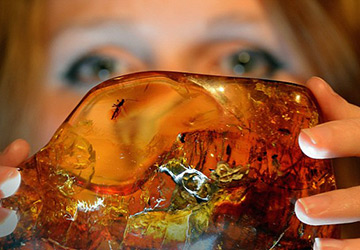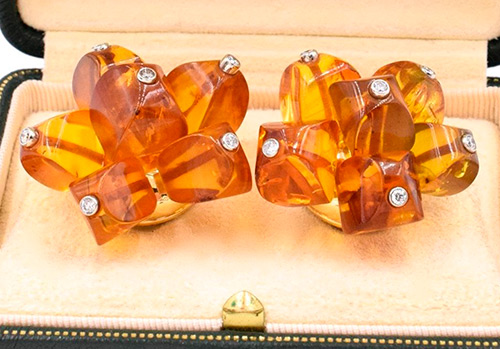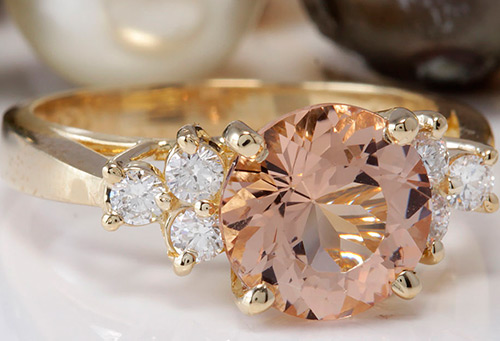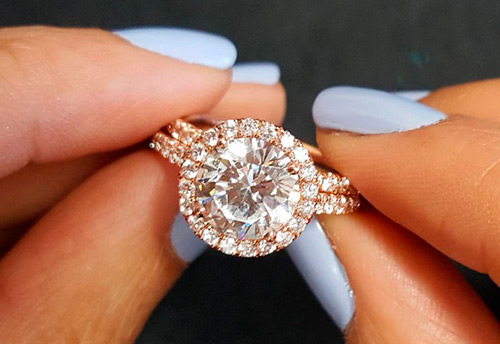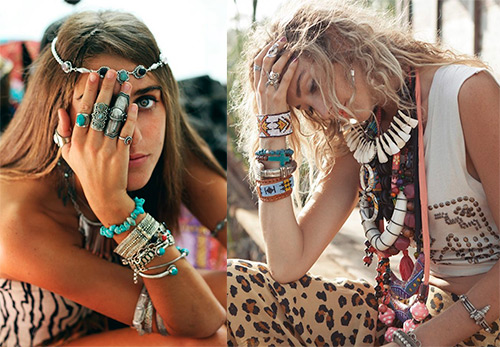Jewelry
Amber jewelry
Currently, jewelry continues to be made of amber: beads, brooches, bracelets, pendants, necklaces, and the stone is inserted into rings. Amber is used for inlaying decorative items; figurines, figurines, vases, and caskets are made from pressed amber.
Amber is soft, amorphous, it is easy to grind and polish, with the exception of opaque types. Unfortunately, among the mined and processed stones, there are rarely stones that are really valuable for jewelry. Amber is beautiful, but only after processing. Therefore, refined amber is used in jewelry.
For example, even in ancient Rome, they knew how to give amber a red tint, having previously boiled it in honey. Opaque stones were clarified by boiling in rapeseed or linseed oil. In today's jewelry business, heat treatment in autoclaves is used - this is how sparkling amber with "golden rays" is obtained.
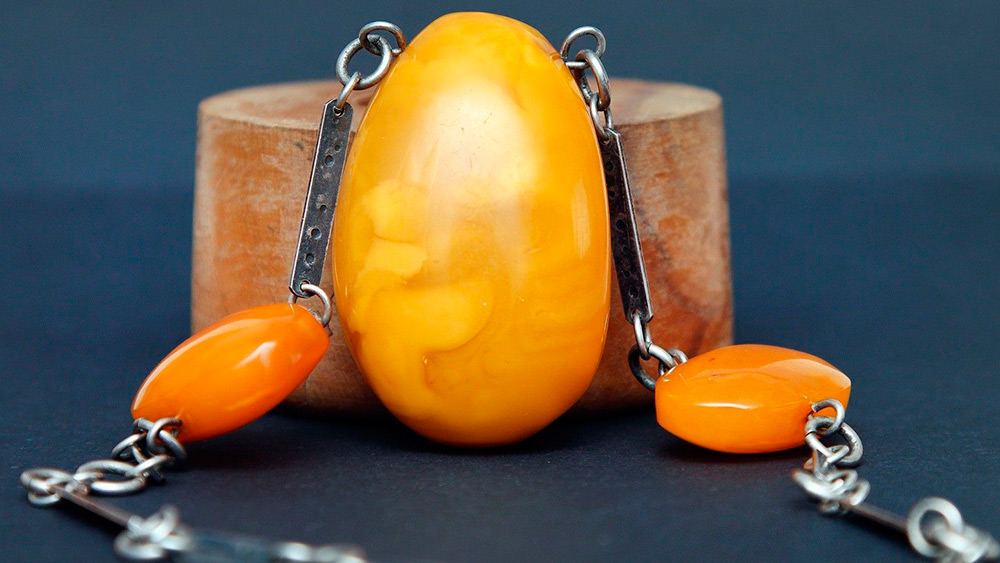
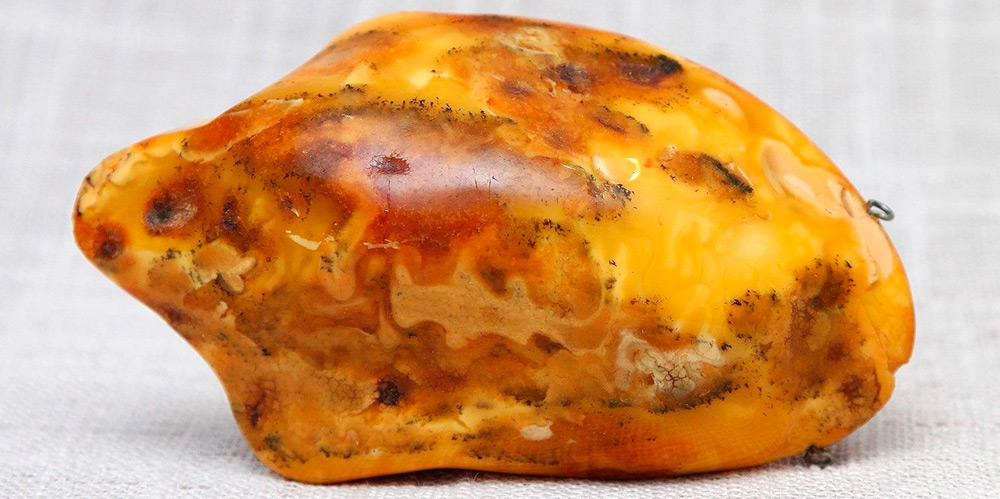
Sun stone beautiful in a frame made of any precious metal. Amber gets along well in one decoration and with other minerals. Jewelers prefer not to cut amber, they give it a spherical or hemispherical shape, sometimes a fantasy one, close to natural outlines. And only occasionally a stone is cut.
Amber glows and shimmers with sunlight, and therefore do not try to put on too many amber jewelry.
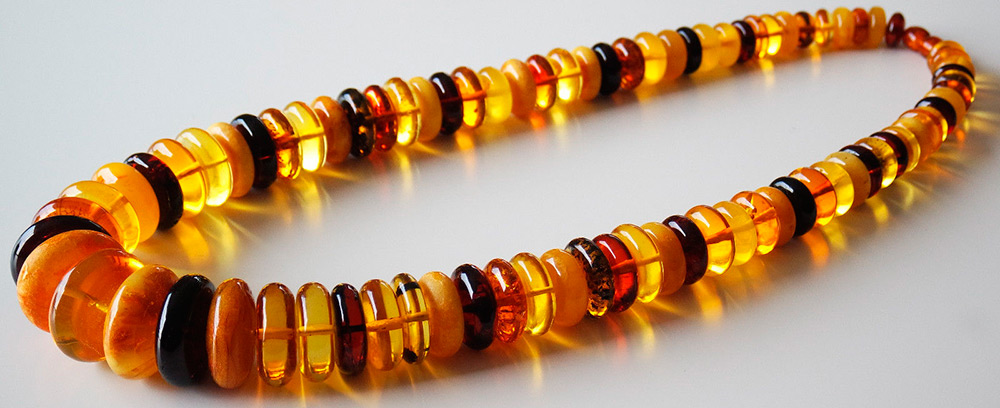
Amber jewelry and stone price
The cost of amber without processing depends on the initial size of the stone - the larger the mineral, the more expensive; qualities - the beauty of amber and its natural inclusions are of great importance. Especially appreciated are those in which insects or reptiles are included as inclusions.
The cost of a finished product made of amber, of course, exceeds the cost of raw amber, although up to 80% of the total mass is lost during stone processing.
In a finished piece of jewelry, the cost of 1 gram of amber ranges from $ 5 to several tens of $. It all depends on the beauty of the stone, type, quality, processing. The stones of the author's handwork are especially appreciated.
As already mentioned, most stones are opaque. To increase its transparency, amber is boiled in linseed oil and then calcined. This is followed by heat treatment and polishing to add brightness.
The most expensive amber is considered to be saturated, intense reddish color or more rare green or blue shades. Moreover, the stone should be as clean and transparent as possible, no internal inclusions, only the inclusion of various insects. The best and more expensive is natural amber of a rather large size, but not pressed. Light yellow or slightly yellowish stones are less expensive.
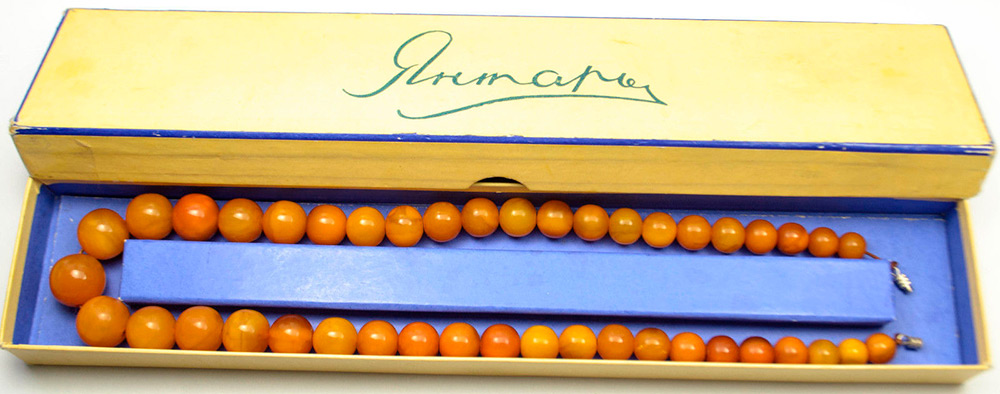
The price of amber jewelry depends on many factors.
Let's consider some:
1. The cost of raw materials, which in turn depends on the size and quality of the stones used in the processing.
2. Depth of processing. Depending on the processing of stones, the product takes on the appropriate shapes and sizes. In this case, the original weight of the amber is lost. The higher the percentage of weight loss, the more expensive the product is.
3. The cost of amber with inclusions is much higher and ranges from several hundred rubles to several thousand dollars. It all depends on the size and rarity of the stone and insect, not to mention the exclusives. There is also the so-called landscape amber, in which, thanks to inclusions, you can see a fantasy landscape.
4. Handiwork with the use of manual labor is the artistic value of the product. Products made on the machine are much cheaper.
5. Dimensions of finished products. The larger the amber beads, the higher their price.
If a product is made of pressed (fused) amber, it cannot be expensive, since such amber is made by melting and further pressing small non-commercial amber and its waste. It can be called amber only conditionally. But its use in jewelry is wide enough. Beads, bracelets, inserts, souvenirs are made from it.
Difference in cost natural amber and pressed differs in 50 - 100 and more times. Pressed amber cannot be expensive, its price per gram is 10 - 20 rubles. A cabochon made of natural stone weighing 4 - 8 grams can cost about 2 - 4 thousand rubles, there is no lower price.
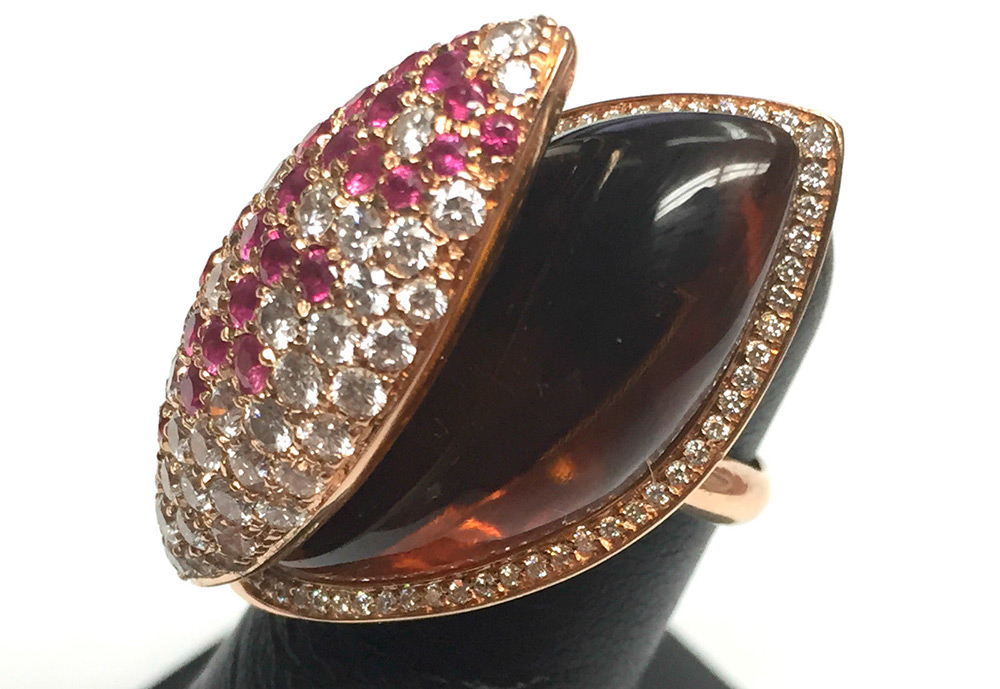
How to distinguish amber from imitation
There are jewelry with imitation of amber. In this case, resins, glass, plastic are used. How to distinguish natural amber from ordinary resins? A real mineral smells like a real forest. Resins are much softer than amber, so they are easily scratched with a fingernail, while natural amber will not leave a trace of a nail.
Synthetic imitations: polymers, glass.
Natural amber is easier to distinguish from glass counterfeits. In this case, if a needle is drawn over a glass fake, there will be no trace, but a trace will appear on the amber.
Amber is a fragile stone. If you break off a piece from it, it will crumble, and the plastic imitation will simply flake off. Amber reacts quickly to a fire brought up, you will smell rosin, plastic will have a sharp, chemical smell.
Externally, imitations made of polymers are very similar to amber, and it is possible to counterfeit any kind of amber, and it will be quite difficult to distinguish it from natural. However, if you apply a red-hot needle, the polymer melts instantly, and the needle is easily immersed in, the smell will be chemical. With natural amber there is a scent of pine forest resin, and on the surface of the amber there is a small trace.
If you scrape the sample with a sharp knife, it will give crumbs, and the polymer will give shavings.
And the simplest and most harmless one for comparing amber and plastic is this: if you add three tablespoons of salt to a glass of water and put a stone, then the amber will remain on the surface, and the fake will drown. Only after these experiments, rinse the amber with clean water and wipe dry. Amber does not like salt water, its appearance can be spoiled. If amber is in an expensive frame, then it is better not to do such experiments.
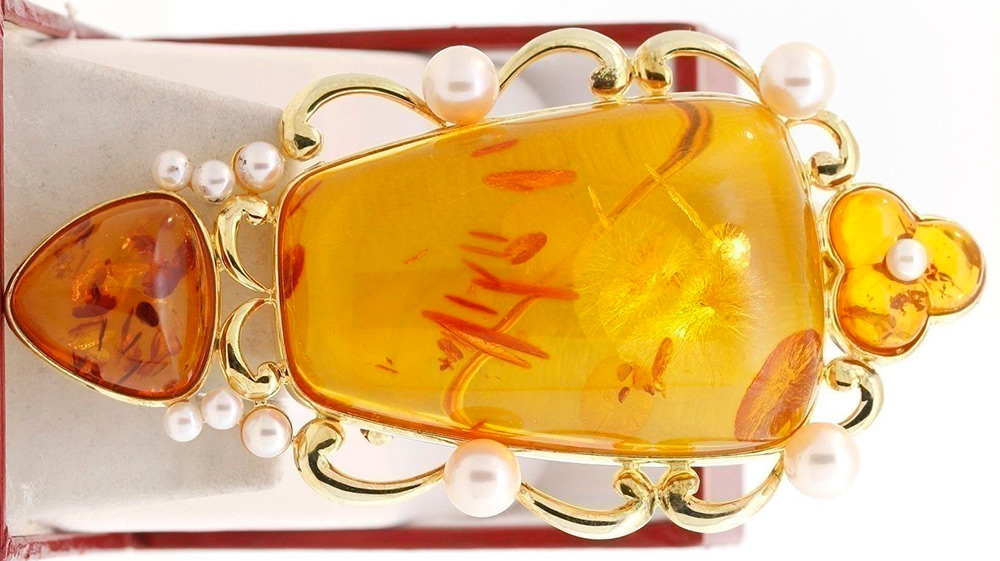
Under ultraviolet rays natural amber will give a bluish tint, fake - white or any other shade.
The presence of an insect in the stone does not mean that the stone is natural. Technological and chemical processing of minerals can make it possible to plant any insect in resin or plastic, but it is more often placed already dead, while an insect with traces of resistance is visible in a piece of amber.
If you are offered a stone with a large reptile, such as a lizard or a scorpion, for a small price, then there is nothing to say - a fake. Such an exclusive can cost several tens of thousands of dollars. Insects larger than 10 mm are rarely found in natural amber.
Why? Because the resin, flowing down the tree, could capture a small insect, which was difficult to get out, than a large lizard or something similar to it. And so, layer by layer for thousands of years, and the petrified resin with the captive formed amber.
Among natural resins, there are those that are very similar to amber. For example, kopal is a “young” resin, that is, we will say “immature” to real amber. Their age is from several hundred years and more. They do not contain succinic acid, they dissolve in ether.
The main deposits of these resins are Central and South America, Africa, Australia, New Zealand and Oceania. To make sure that it was dug, it is enough to rub it over the surface with a napkin soaked in ether. Unlike amber, a stain forms on the surface of the dug.
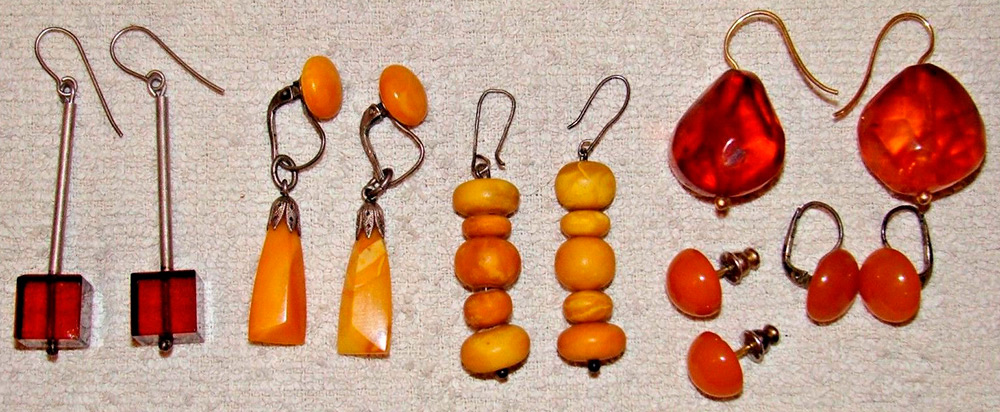
A few more words about pressed amber.
This amber is a product of processing small amber pieces and their crumbs. All this is crushed and processed at high temperature and pressure.The color of the samples obtained depends on the dyes used. In trade, pressed amber is often found, which is passed off as natural, but some sellers impose the price for it as for natural, and this is a fraud tens and hundreds of times. A forgery can be noticed, but it is difficult for a layman.
How to distinguish natural amber from pressed amber?
Rub the pressed amber with a piece of cloth dipped in ether, it will become sticky, unlike natural. In the pressed amber under a magnifying glass, one can see the structure of the flow of a dense groundmass and blobs of dye. The pressed amber is easier to work with, and therefore the profit is much higher.
There are shops that sell products made of just such amber, but sellers are silent about it. And it's even worse when ordinary plastic is sold instead of amber. The high price for an amber product is also a guarantee that the stone is natural here. Therefore, do not buy amber from random sellers, only go to those stores you can trust.
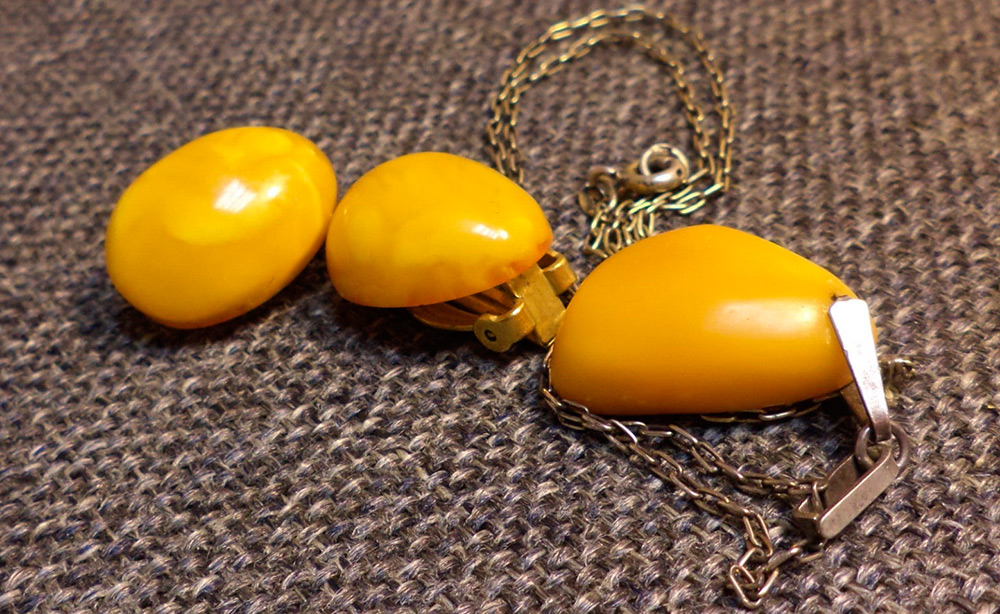
Amber jewelry care
Amber requires a careful attitude towards itself. Since amber is a fragile mineral, it must be worn with care, protected from impacts, especially from scratches. Do not store jewelry with amber next to metal jewelry.
To make amber jewelry delight you longer, protect them from frequent direct sunlight, otherwise even the brightest of the stones will begin to grow cloudy over time. A cloudy stone can be treated with a mixture of paraffin and tooth powder, after which the remains of the mixture can be removed with a soft cloth, or it is better to contact a jeweler.
Amber loves wet wraps. The stone can become covered with microcracks, which will further contribute to its destruction. Therefore, rinse it often with water, wrap it in a wet cloth. After such procedures, the stone must be wiped dry with a soft cloth.
With a careful attitude, amber will last for years, and for years it will give you bright sunshine and its warmth.
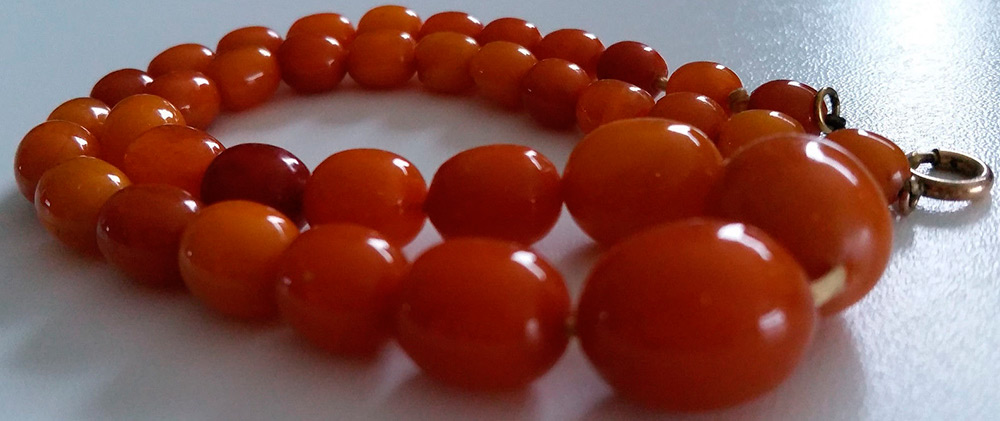
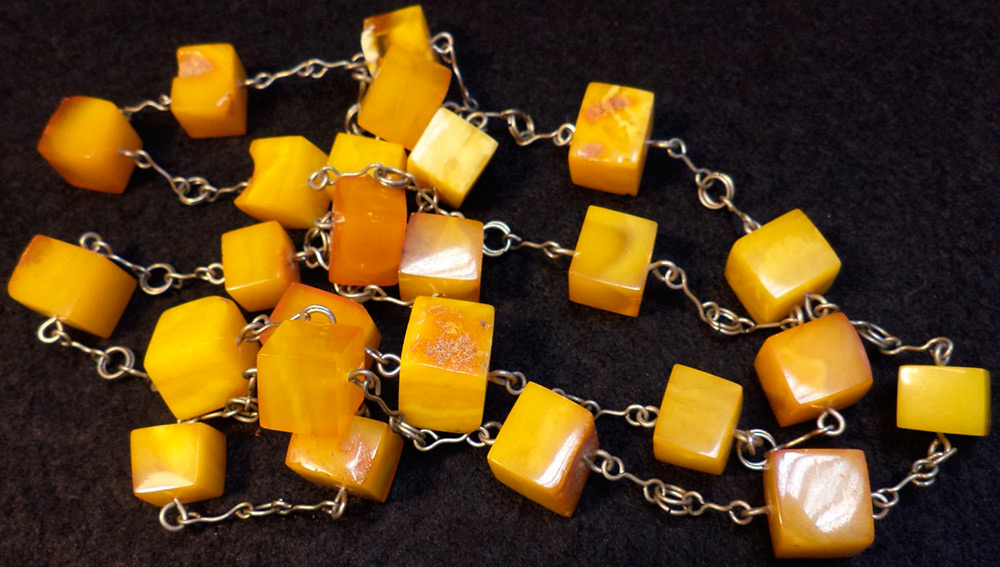
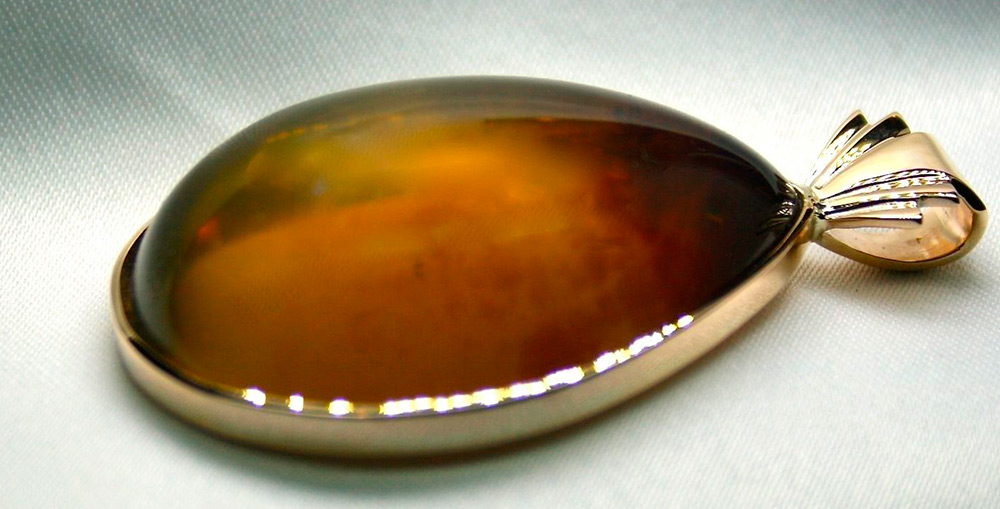
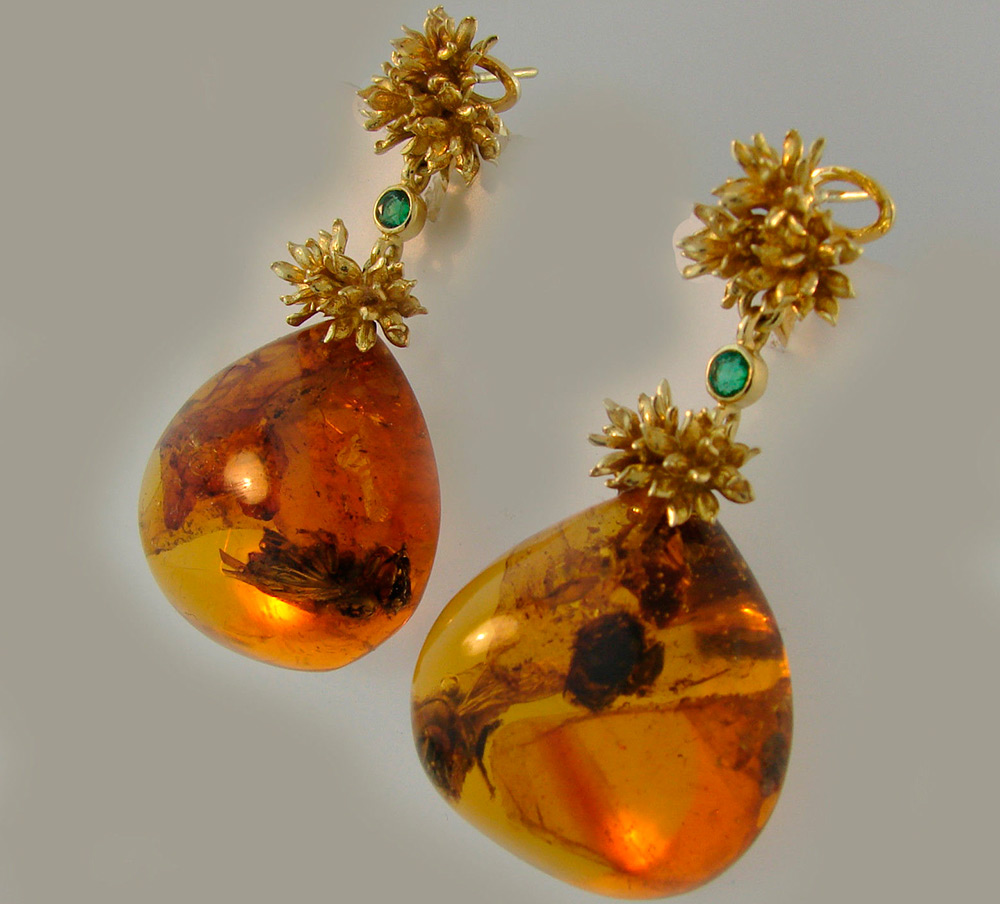
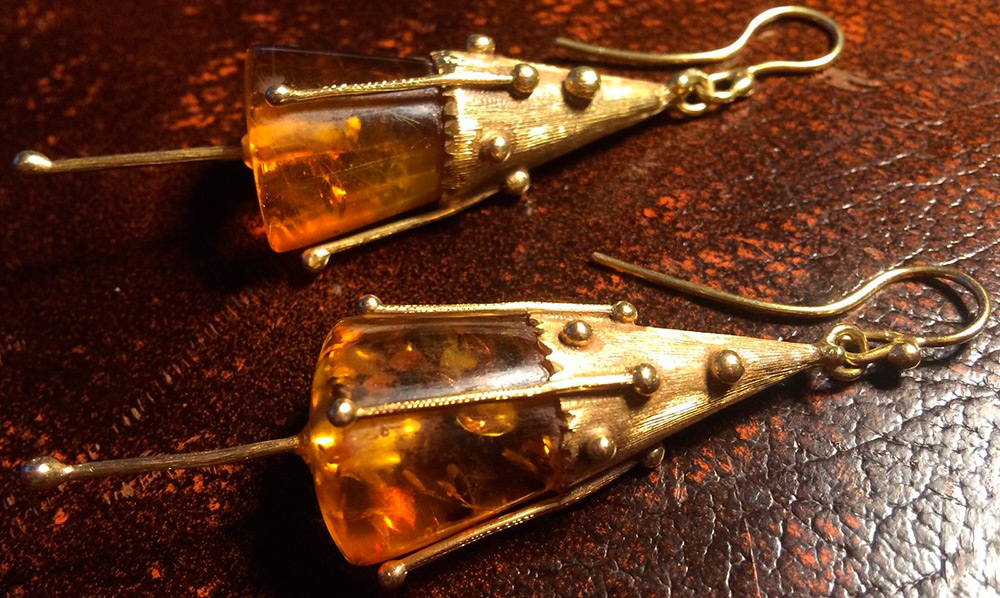
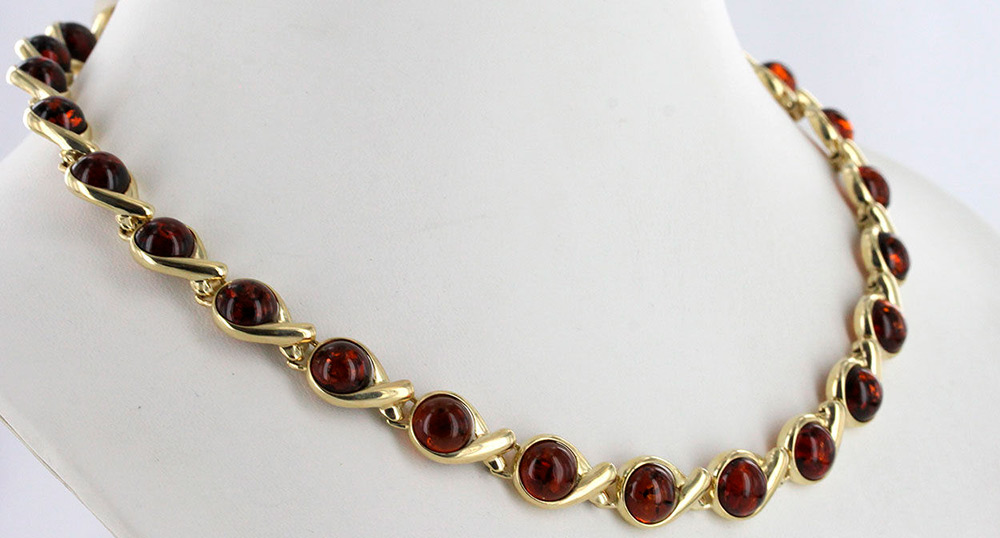
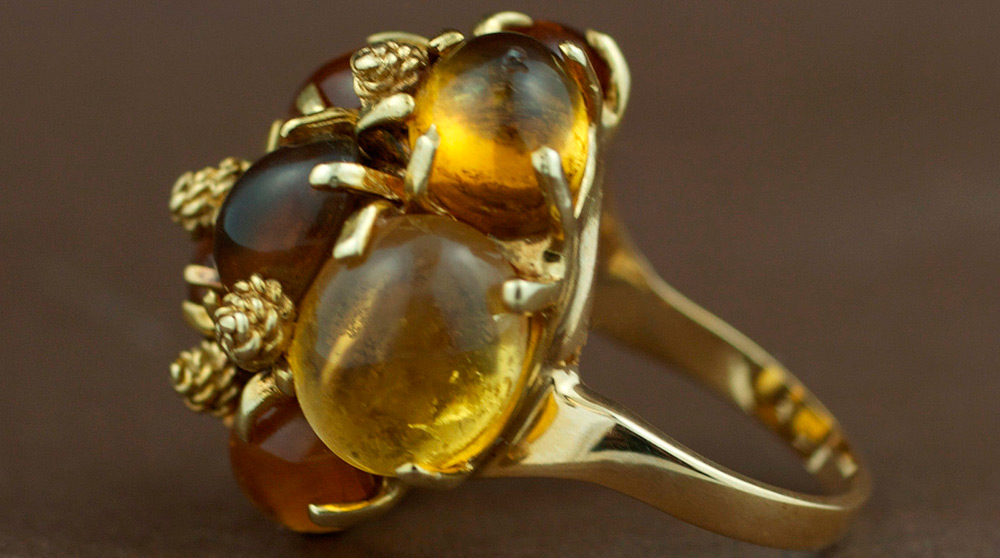
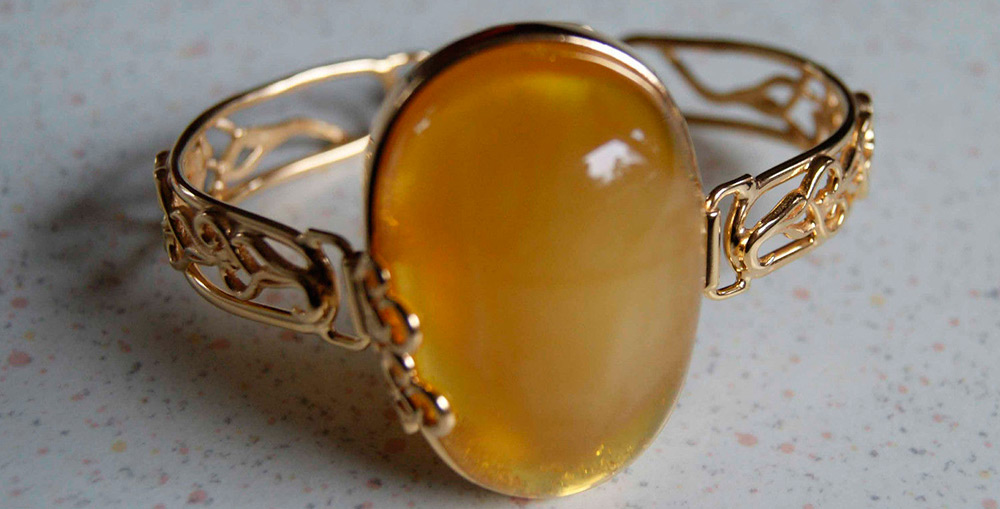
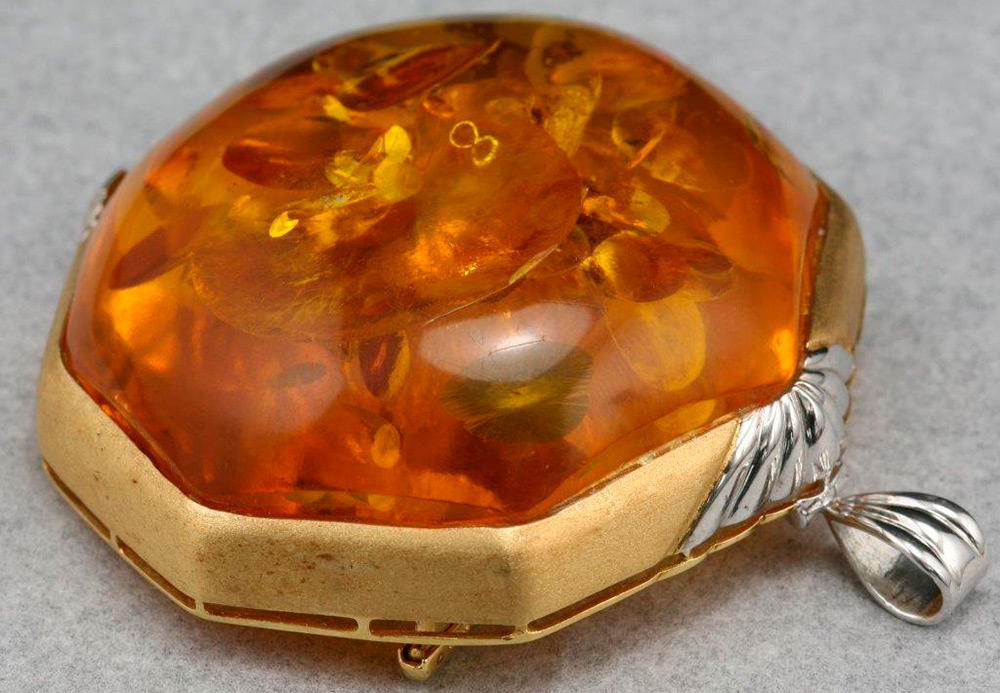
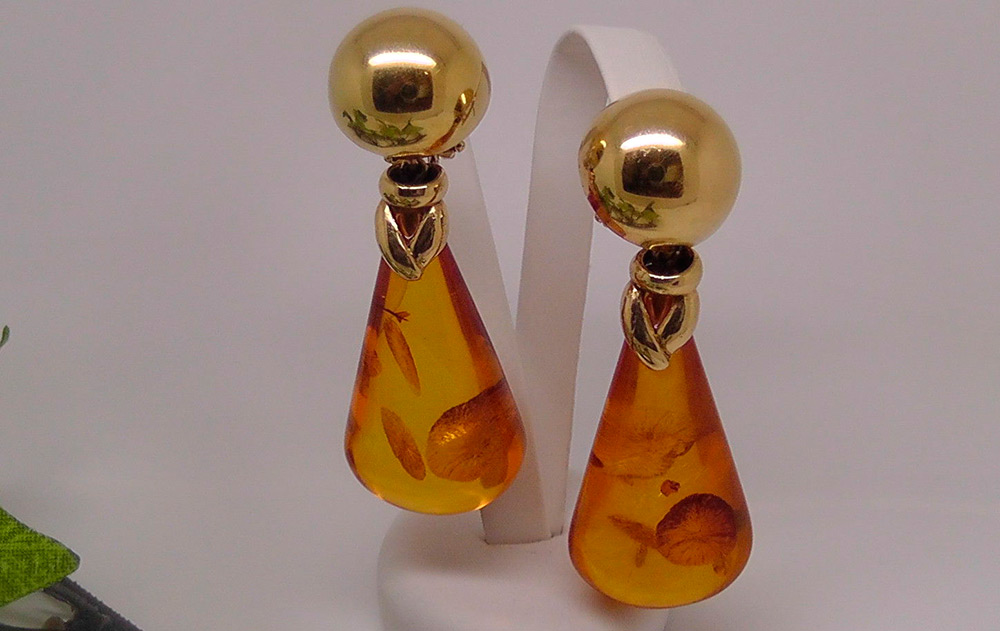
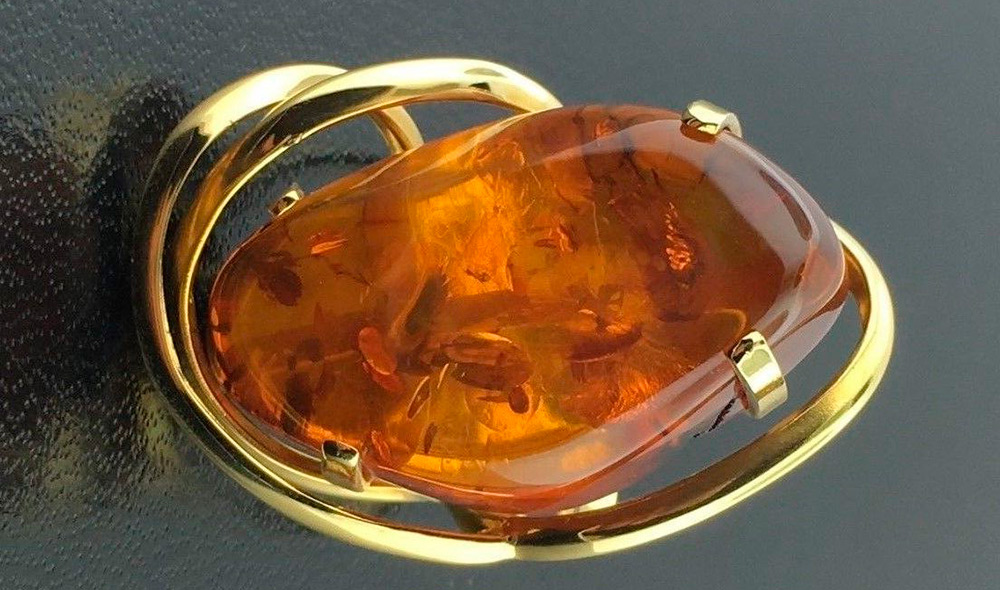
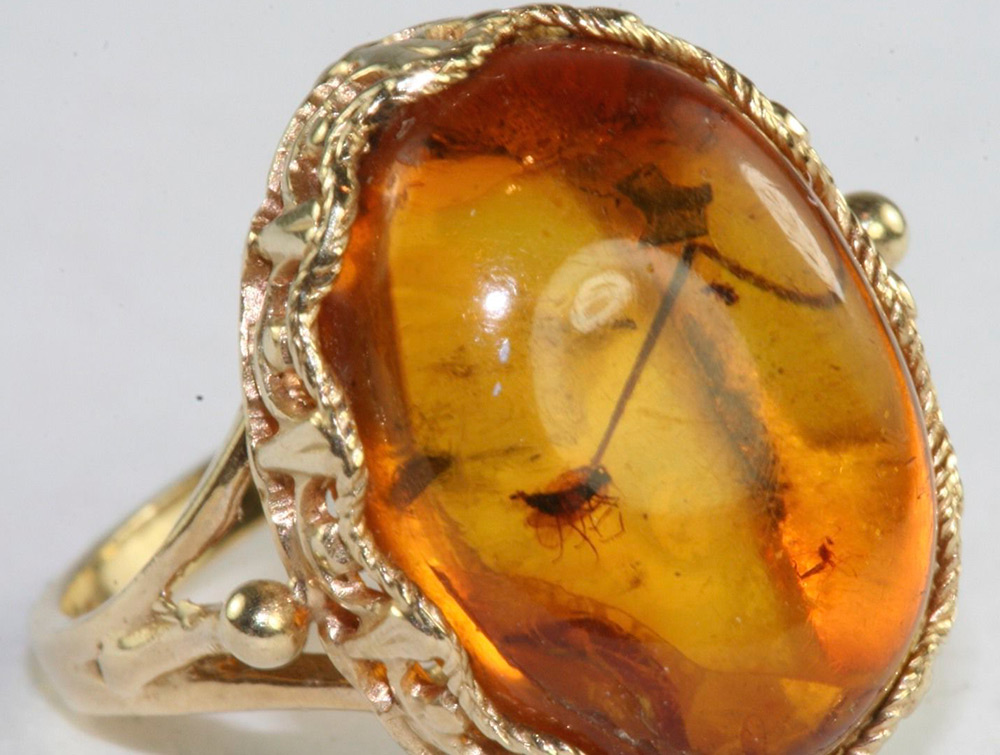
Comments and Reviews
Add a comment
Rating news
Shades of clothing that make women look younger
What shades of hair make women younger: rules and photos
Funny wedding dresses - photos and ideas
12 most expensive down jackets for the winter
How to look 25 at 40: tips from supermodels
Beautiful schoolgirls
Anti-aging haircuts and hairstyles for women
Fashionable skirts for autumn and winter
Fashionable women's trousers for the cold season
Fashionable and stylish sandals for summer 2024
Spring-summer 2024
 Fashionable dresses and tops with thin spaghetti straps
Fashionable dresses and tops with thin spaghetti straps
 Bandana tops: how to wear stylishly and beautifully
Bandana tops: how to wear stylishly and beautifully
 How to put together the perfect men's wardrobe for the summer
How to put together the perfect men's wardrobe for the summer
 Trendy shorts for spring-summer 2024
Trendy shorts for spring-summer 2024
 Fashionable skirts for spring-summer 2024: a guide to online shopping
Fashionable skirts for spring-summer 2024: a guide to online shopping
 The most fashionable dresses spring-summer 2024: styles and colors
The most fashionable dresses spring-summer 2024: styles and colors
 Fashionable total look 2024: image ideas and trends
Fashionable total look 2024: image ideas and trends
